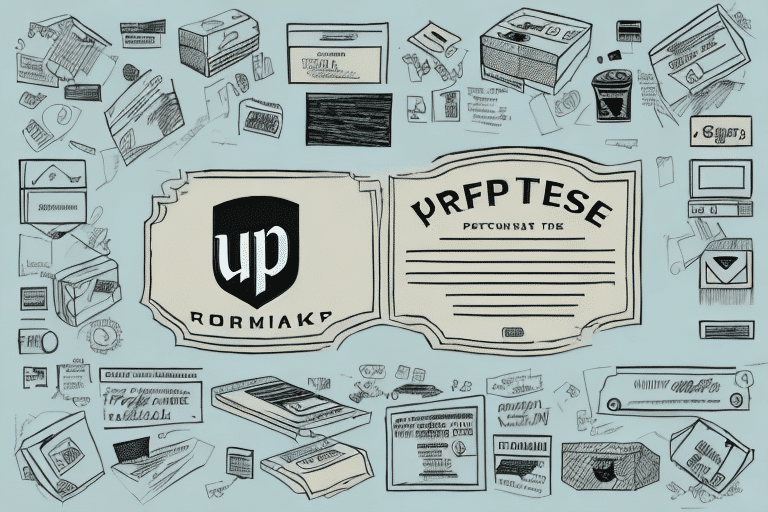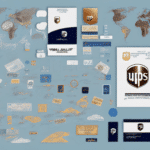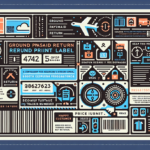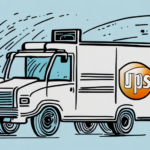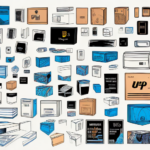Understanding the UPS Electronic Return Label Fee
Returns are a critical component of e-commerce, and businesses are constantly seeking ways to streamline the process while minimizing costs. The UPS Electronic Return Label is a popular solution, enabling customers to print and attach pre-paid return labels to their packages effortlessly. However, the associated UPS Electronic Return Label Fee can be a concern for some businesses. This article provides a comprehensive overview of the fee, its benefits, cost management strategies, and best practices to optimize your returns process.
What is the UPS Electronic Return Label Fee?
Definition and Purpose
The UPS Electronic Return Label Fee is a charge imposed by UPS for utilizing their Electronic Return Label service. This fee is applied per label and varies based on the country and the level of service selected. The primary purpose of the fee is to cover the costs associated with generating the electronic label, as well as processing and handling expenses.
Fee Structure and Variables
In the United States, the fee typically ranges from $1.25 to $2.25 per label, while in Canada, it ranges from CAD $2.00 to CAD $8.00. These rates are subject to change, so it's advisable to consult the official UPS website or contact UPS customer service for the most current pricing.
Benefits of Using the UPS Electronic Return Label
Convenience and Efficiency
The UPS Electronic Return Label service offers a streamlined returns process, allowing customers to generate and print labels online without waiting for a physical label to be mailed. This leads to quicker return initiation and reduces the chances of labels being lost or delayed in transit.
Enhanced Tracking and Data Insights
With electronic labels, businesses can easily track return shipments, gaining valuable insights into return rates, reasons for returns, and overall customer satisfaction. According to a study by Investopedia, efficient return processes can significantly improve customer loyalty and retention.
Environmental Impact
Using electronic labels reduces the need for paper-based labels, contributing to lower paper waste and carbon emissions. This aligns with sustainability goals and can be a compelling selling point for environmentally conscious consumers.
Cost Management Strategies
Negotiating Fees
Businesses with high return volumes may negotiate discounted fees directly with UPS. Establishing a high-volume account can lead to reduced per-label costs, making the service more economically viable.
Utilizing Third-Party Shipping Software
Employing third-party shipping software can offer discounted rates through negotiated partnerships with carriers like UPS. Tools such as ShipStation or ShippingEasy provide integrations that can automate label generation while optimizing costs.
Exploring Alternative Shipping Carriers
Comparing UPS fees with other carriers like FedEx or the United States Postal Service (USPS) can help businesses identify more cost-effective return solutions without compromising service quality.
Generating a UPS Electronic Return Label
Steps to Create a Label
Businesses can generate UPS Electronic Return Labels using platforms such as UPS WorldShip or the UPS website. The process involves entering the customer's shipping information, specifying the return reason, and applying any necessary instructions or fees.
Delivery to Customers
Once generated, the label can be emailed directly to the customer or printed and included in the original shipment. It's crucial to ensure that the label is used within its validity period to avoid any service interruptions.
Best Practices for Optimizing Returns with UPS Electronic Return Labels
Clear Communication
Provide customers with straightforward instructions on how to generate and use their return labels. Transparency about any associated fees and return policies enhances the customer experience and reduces confusion.
Proper Packaging
Ensure that returned items are securely packaged to prevent damage during transit. Providing guidelines on packaging can minimize the risk of returns being mishandled or lost.
Regular Policy Review
Periodically assess and update your return policies to reflect current business needs and customer feedback. Incorporating data from return tracking can help identify areas for improvement.
Common Mistakes to Avoid
Inadequate Tracking
Failing to effectively track return shipments can lead to lost packages and dissatisfied customers. Utilize UPS tracking tools to monitor each return and promptly address any issues that arise.
Poor Communication
Not clearly outlining the returns process can result in customer frustration. Ensure that all return-related information is easily accessible and comprehensible.
Ignoring Packaging Standards
Improperly packaged returns can cause damages, leading to increased costs and negative customer experiences. Adhering to recommended packaging standards is essential.
Comparing UPS Electronic Return Labels with Other Options
In-House Return Labels
While offering your own return labels provides complete control over the returns process, it can incur additional costs related to label printing and mailing. UPS Electronic Return Labels offer a cost-effective alternative with built-in tracking and streamlined processes.
Third-Party Return Services
Services like FedEx Returns or USPS eCommerce Returns provide similar functionalities. However, the choice depends on factors such as pricing, integration capabilities, and the level of tracking required.
Frequently Asked Questions
What is the exact fee for using the UPS Electronic Return Label?
The fee varies by region and service level. It's best to consult the UPS website for the most accurate and up-to-date information.
How is the fee calculated?
The fee is based on the country and the selected UPS service level. Higher service levels or international returns may incur higher fees.
Can the fee be waived or reduced?
Businesses with substantial return volumes may negotiate reduced fees with UPS. Additionally, utilizing shipping software with discounted rates can help lower costs.
Conclusion: Investing in UPS Electronic Return Labels
Despite the associated fee, the UPS Electronic Return Label service offers significant advantages, including streamlined returns processes, enhanced tracking capabilities, and improved customer satisfaction. By implementing best practices and exploring cost-saving strategies, businesses can effectively manage return logistics, ultimately contributing to a positive customer experience and increased loyalty.













